
This tin-plated iron lunch box was patented in 1871 by Charles C. Moore. The box folds in flat on itself. bout three inches tall in its box form; it collapses down to less than half an inch when folded.
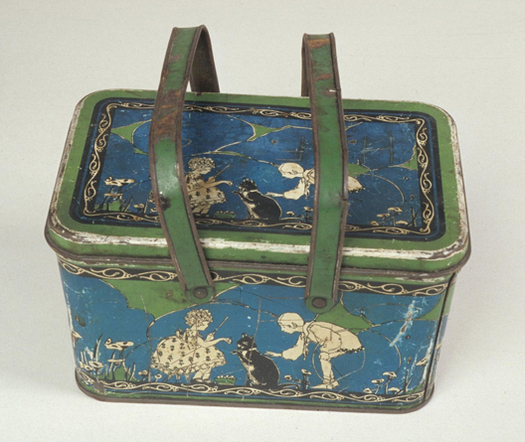
This tin-plated steel lunch box was manufactured by the Ohio Art Company in the 1920s. The lunch box features a removable lid and two pinned metal handles, as well as images of children playing with a cat on the top and sides of the box.
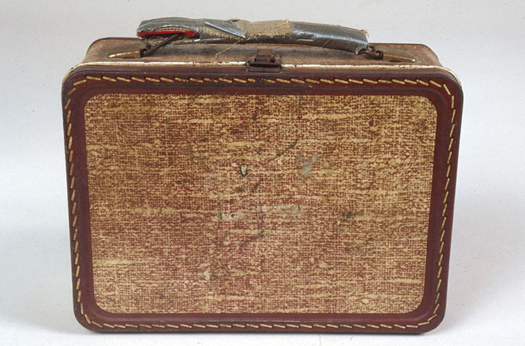
This steel lunch box was manufactured by Thermos in 1957. It features a metal snap for a hinged lid and a collapsible metal handle, and the exterior design simulates a brown leather suitcase.
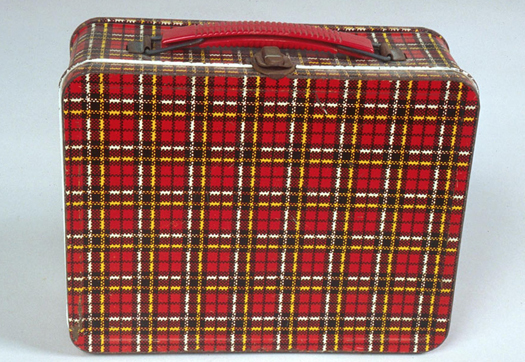
This steel lunch box was manufactured by the Ohio Art Company in1957. It features a metal snap for a hinged lid and a collapsible red, plastic handle. The exterior design is a red, brown and yellow plaid design.
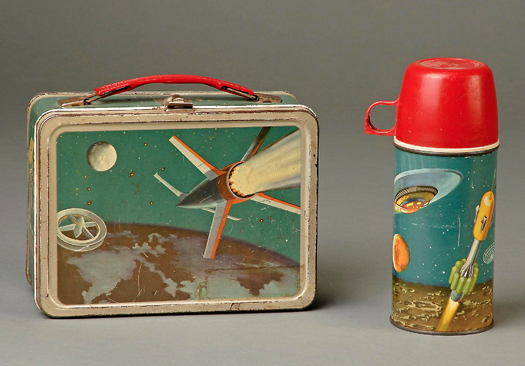
The Soviet launch of the Sputnik satellite in late 1957 sparked interest in the United States in science education even among elementary school children. In 1958, King Seeley Thermos produced this imaginative box evoking space travel and landings on distant moons and planets. This is one of the few pop culture lunch boxes from the late 1950s not designed around a television show.
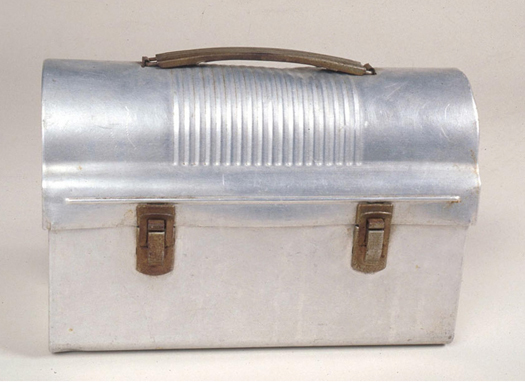
This domed, aluminum lunch box has two metal snaps for a hinged lid and a collapsible black, plastic handle. There is a wire bail inside for a thermos bottle to fit into the domed lid. The exterior of the lunch box is silver, and is in the old-fashioned “workman” style.
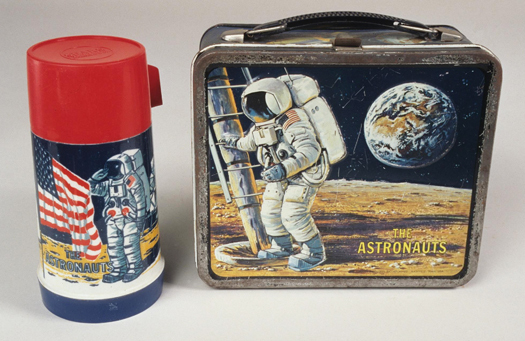
This steel lunch box was manufactured by Aladdin Industries in 1969 to take advantage of the excitement over the moon landing. The exterior features images from the Apollo 11 mission, including Neil Armstrong’s first step onto the lunar surface, and the command module’s splashdown.

This plastic and glass thermos bottle was made by Aladdin Industries in 19970. The botte has a red plastic, screw-on cup lid and red plastic, screw-on stopper.

This tin lunch box was made by Thermos in 1963. The front side of the box shows a cross section of the Mercury manned space flight module, showing John Glenn operating the capsule. The reverse side shows the Atlas rocket launching from the space pad. These images were lifted from National Geographic, and Thermos received a cease and desist and stopped production. As such, these boxes are rather rare.
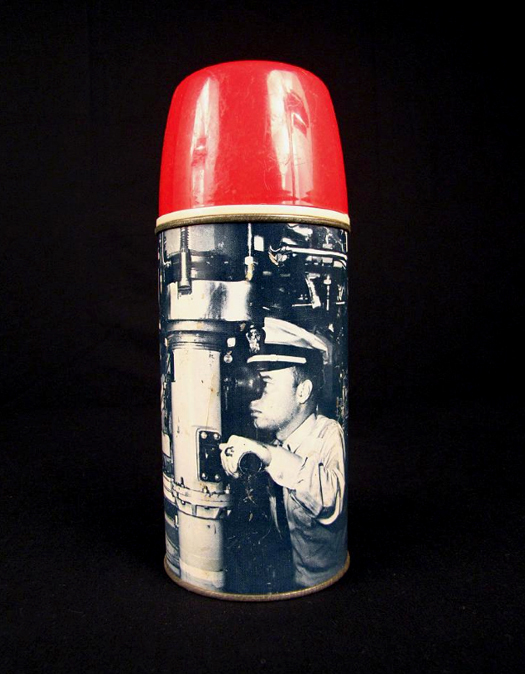
This tin, plastic and glass thermos bottle was made by Thermos in 1960. It has a red plastic, screw-on cup lid and a red and white plastic, screw-on stopper. The bottle has an image of an officer using a submarine’s periscope.
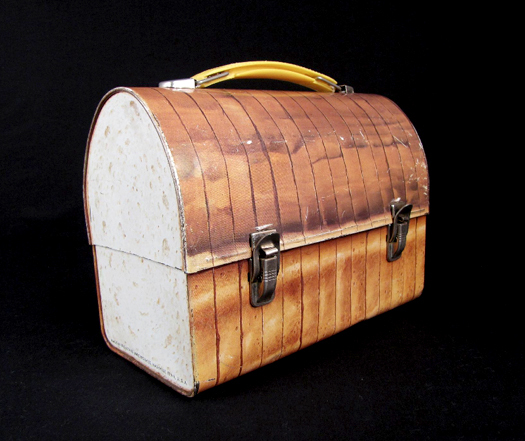
This domed, tin lunch box was made by Aladdin in 1968. It has two metal snaps on a hinged lid and a collapsible, yellow plastic handle. The box has a brilliant pop art design, taking the form of a sliced loaf of bread.
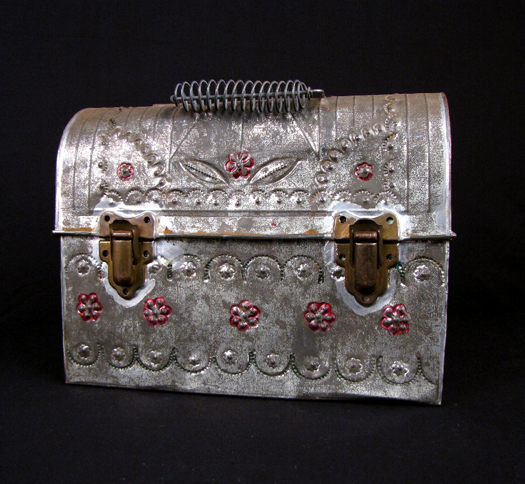
This domed, tin lunch box was made around 1950, but has an unknown maker. The box has two metal snaps for a hinged lid and a spiraled wire hinged handle. There is a silver design with red outlined rosettes and green outlined scallops on the lid and sides.
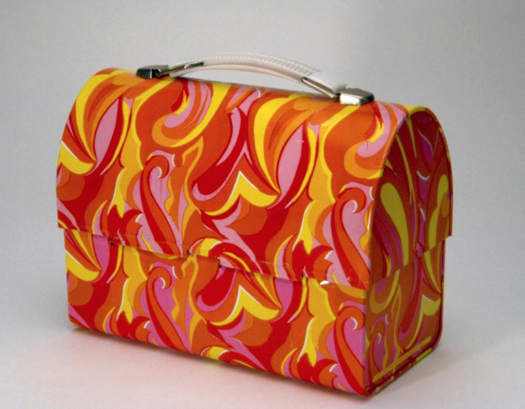
This domed steel lunch box was manufactured by Aladdin Industries in 1969. This lunch box features a psychedelic pattern of swirling orange, red, pink and yellow. The wild design aesthetic is representative of the 1960’s ethos and evokes other sixties motifs like tie-dye and lava lamps.
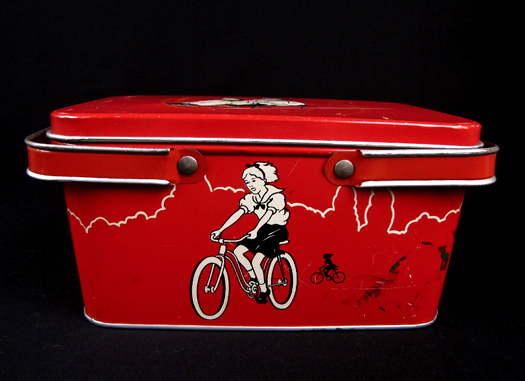
This red, rectangular lunch pail is made of steel and has two handles which are attached to each side and pivot up and down. There are white and black illustrations of children playing various activities like football, baseball, roller skating and cycling. The pail was made by Deco Ware around 1931.
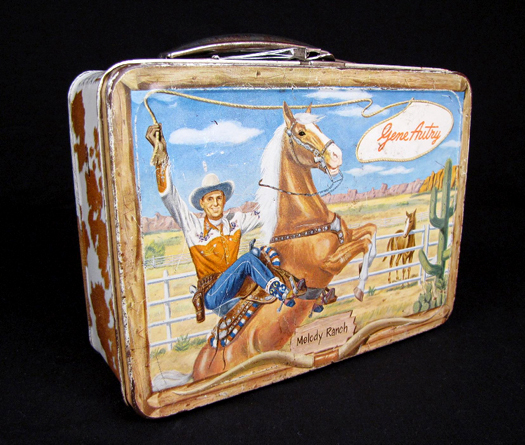
This tin lunch box was made by Aladdin Industries in 1954. It features a picture of Gene Autry riding a bucking horse, and the back of the box features a tan and white design to resemble a cowhide. Autry was known as “The Singing Cowboy,” performing in radio, movies, and television from the 1930s to 1960s.
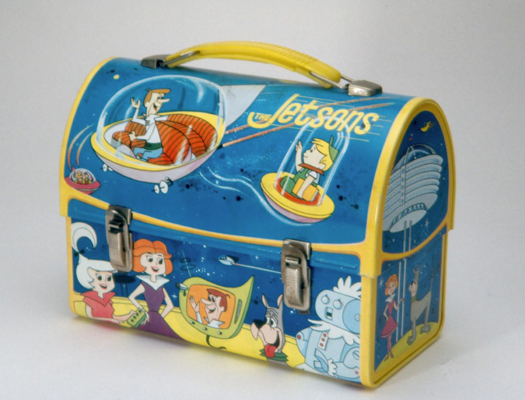
This domed steel lunch was manufactured by Aladdin Industries in 1963. It features images from the popular television series, The Jetsons. The lunch box features images of the whole Jetson family, George, Jane, Judy, and Elroy, as well as Rosie the Household Robot and Astro the Dog. This box is one of the most coveted by collectors because of its great design, colorful art, and scarcity.
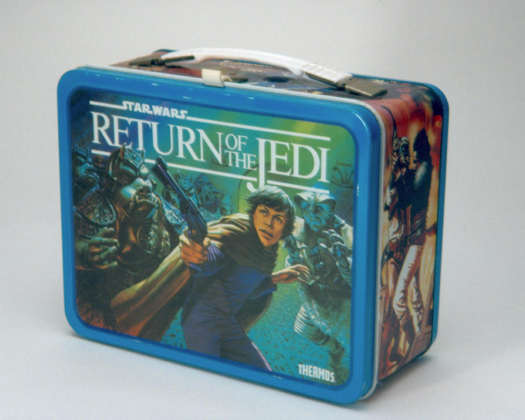
This metal lunch box was manufactured by Thermos in 1983. The lunch box has a blue rim and animated scenes from the movie Star Wars: Return of the Jedi on all sides. Star Wars: Return of the Jedi was released in 1983 as the final film in the original Star Wars trilogy. The box features images of the half-constructed Death Star, a Star Destroyer, and Darth Vader’s face on one side, while the reverse side has a picture of Luke Skywalker and a Gamorrean guard.
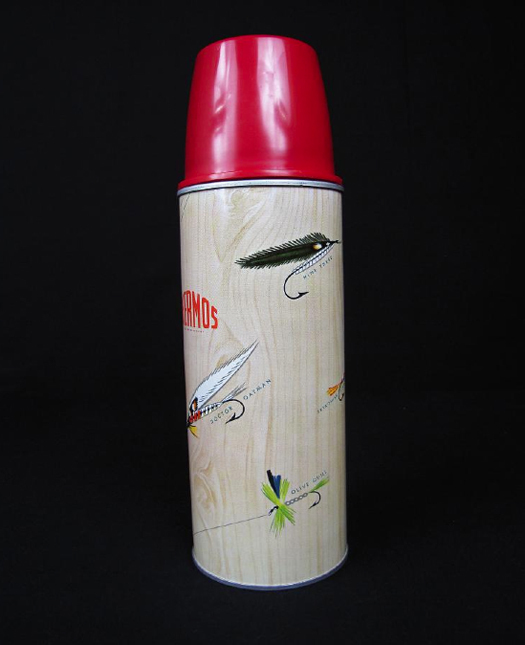
This metal thermos bottle was made by Thermos in the 1950s. It has a glass liner, a red plastic screw-on lid and red plastic stopper. The thermos is decorated with colorful animated fly-tied fish-hooks, and each is named.
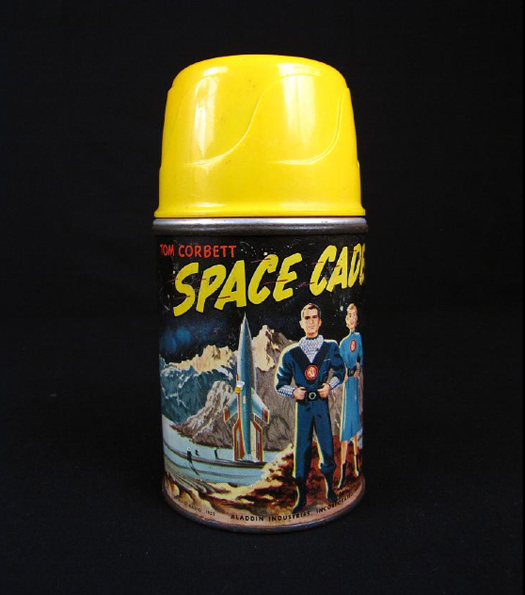
This tin, plastic and glass thermos bottle was made by Aladdin Industries in 1952. The bottle has a yellow plastic, screw-on lid and a brown cork stopper. The bottle has a black background with colorful space action drawings from the television series Tom Corbett Space Cadet on the side.
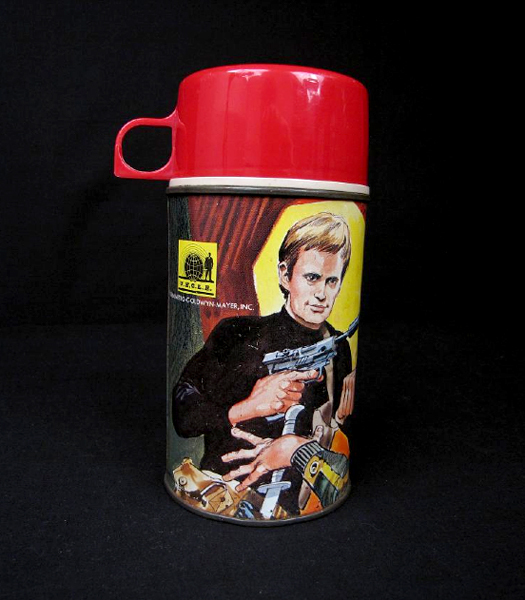
This tin, plastic and glass thermos bottle was manufactured by Thermos in 1966. It has a screw-on, red plastic cup lid. The bottle is the companion piece to the lunch box with object number 2001.3100.12.01. The bottle has action drawings from the television series The Man from U.N.C.L.E., the art is the same as the front of its companion box.
This essay was originally posted in August, 2012.
